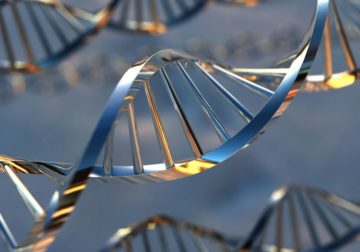Natalia Mesa in The Scientist:
 Humans are still evolving new genes, according to a study published in Cell Reports on December 20. As our lineage evolved, at least 155 human genes sprung up from DNA regions previously thought of as “junk,” including two human-specific genes that emerged since humans branched off from chimpanzees around 4 to 6 million years ago, the researchers report. “I thought it was a great study,” says Alan Saghatelian, a biologist at the Salk Institute who was not involved in the work. He adds that he “wouldn’t be surprised” if there were many more of these genes hiding in plain sight. The genes described in the new study went undiscovered for so long because they’re teeny: They top out at about 300 nucleotides in length, while a typical human gene is 10 to 15,000 base pairs on average. Even though they possess start and stop codons that allow them to be read by cells’ transcriptional machinery just like traditional genes, these so-called microgenes—sometimes called short open reading frames (sORFs)—have long been assumed to be nonfunctional, Saghatelian explains.
Humans are still evolving new genes, according to a study published in Cell Reports on December 20. As our lineage evolved, at least 155 human genes sprung up from DNA regions previously thought of as “junk,” including two human-specific genes that emerged since humans branched off from chimpanzees around 4 to 6 million years ago, the researchers report. “I thought it was a great study,” says Alan Saghatelian, a biologist at the Salk Institute who was not involved in the work. He adds that he “wouldn’t be surprised” if there were many more of these genes hiding in plain sight. The genes described in the new study went undiscovered for so long because they’re teeny: They top out at about 300 nucleotides in length, while a typical human gene is 10 to 15,000 base pairs on average. Even though they possess start and stop codons that allow them to be read by cells’ transcriptional machinery just like traditional genes, these so-called microgenes—sometimes called short open reading frames (sORFs)—have long been assumed to be nonfunctional, Saghatelian explains.
But recent studies found that knocking out sORFs stunts cell growth, indicating they’re important after all. One 2020 study, for example, found hundreds of functional sORFs in human cells, both in the coding and noncoding regions of the genome. The number was intriguing to Nikolaos Vakirlis, a computational evolutionary biologist at Biomedical Sciences Research Center Alexander Fleming in Vari, Greece, and he and his colleagues felt compelled to investigate these genetic oddities further, launching what became the newly published research. “We find species-specific genes everywhere,” Vakirlis says. “So there has to be an evolutionary route for them to originate.”
More here.
